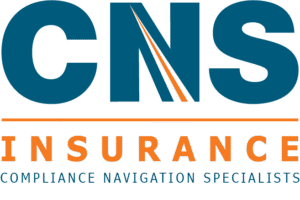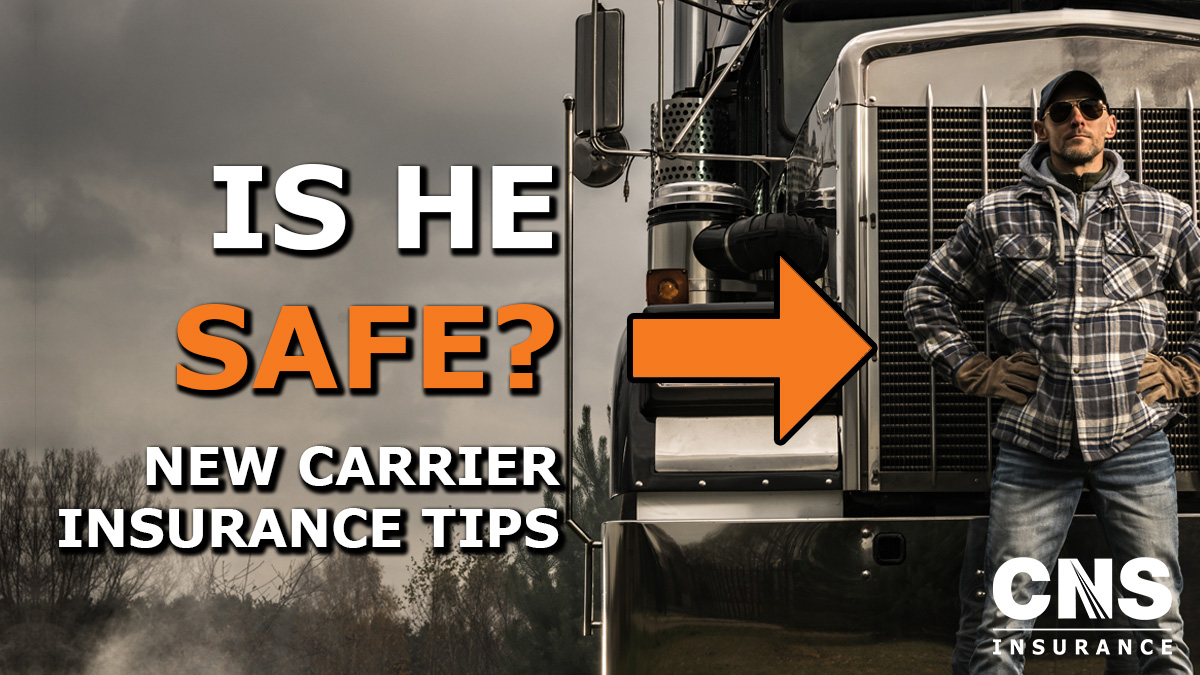A Complete Guide to Getting Hired, Managing Insurance, and Building a Strong Safety History
Key Takeaways
- New carriers must be transparent and proactive about safety — “no data” doesn’t mean “unsafe.”
- Leasing on can be a smart short-term move, but know the insurance and history tradeoffs.
- Always maintain documentation, from DQ files to clean roadside inspections, to tell your safety story.
- Underwriters reward carriers who resolve claims quickly and maintain strong compliance programs.
- Annual insurance reviews prevent coverage gaps and control costs.
When companies search for reliable transportation partners, one question comes up again and again:
“Should I hire a carrier that’s only had authority for a few days or weeks?”
It’s a fair question — and one that carries a lot of weight in today’s risk-conscious logistics environment.
For brokers and shippers, a brand-new carrier means no track record, no CSA scores, and no loss history to evaluate. For new owner-operators, it means struggling to win freight and paying higher insurance premiums while trying to prove your safety commitment.
This guide explains how new carriers can overcome those challenges, build a credible safety reputation, and make smart insurance and business decisions that lead to long-term growth.
The Challenge: No Safety Scores, No Data, No Trust
When a carrier receives new FMCSA operating authority, they start with a blank slate — no inspections, no violation history, and no crash data.
To a risk manager, that means uncertainty:
- How safely do they operate?
- Are their drivers experienced?
- Do they have adequate insurance?
- Can they be trusted with high-value freight?
But “no data” doesn’t mean “unsafe.” Every successful fleet once started small. What matters is how new carriers communicate their safety practices and how brokers or shippers evaluate them responsibly.
How Brokers and Shippers Should Evaluate New Carriers
Before hiring a new carrier, consider the following steps:
1. Use Technology and Data
- Check FMCSA’s SAFER system, Carrier411, and insurance filings.
- Look for connected histories (prior MCs or DOT numbers).
- Ask if the carrier uses ELD telematics or safety monitoring systems.
2. Communicate Directly
A quick phone call can reveal professionalism, communication habits, and transparency. Ask about:
- Driver experience
- Safety programs
- Equipment condition
- Insurance limits and coverages
3. Verify Compliance
Confirm that:
- DOT and MC numbers are active
- MCS-150 and BOC-3 are filed
- UCR and IFTA are current
- Insurance certificates meet federal minimums
4. Assess Risk
Ask yourself:
- Is this a low-risk or high-value load?
- Can you replace the carrier quickly if something goes wrong?
- Do you have clear contract terms for liability and insurance?
5. Document Exceptions
If you approve a new carrier, document your reasoning and create an internal policy for future cases. That way, you avoid setting a dangerous precedent.
Common Scenarios for Low-Authority Carriers
Scenario 1: An experienced owner-operator with 20 years behind the wheel starts a new company.
→ Likely a low-risk situation if documentation supports their history.
Scenario 2: A previously shut-down carrier restarts under a new MC number to hide violations.
→ High-risk situation; due diligence and deeper investigation are needed.
Each case looks similar on paper but carries dramatically different levels of risk — which is why context and verification are everything.
For New Carriers: How to Build Your Safety Story
1. Create a Documented Safety Program
Show you’re serious about compliance with written policies on:
- Driver qualification and onboarding
- Maintenance and inspection schedules
- Hours of Service and fatigue management
- Drug and alcohol testing
2. Highlight Driver Experience
Provide PSP reports, MVRs, and years of experience for each driver. A clean history can offset your short authority duration.
3. Complete the New Entrant Audit Early
Get ahead of the FMCSA’s required audit. Work with compliance experts (like CNS) to prepare DQ files, maintenance logs, and safety policies in advance.
4. Track and Share Early Results
Once roadside inspections occur, share clean inspection reports with potential shippers or brokers to prove your commitment to safety.
5. Work With Trusted Partners
Use CNS for DOT compliance, and CNS Insurance to find the right coverage and avoid gaps that could derail your progress.
Leasing vs. Running Under Your Own Authority
When starting out, owner-operators typically face two paths:
- Lease onto an established carrier
- Operate under your own authority
Leasing offers faster cashflow and lower startup risk, but the tradeoff is less control — and potential long-term issues with insurance and safety history.
Be Careful With Insurance When Leasing On
When leasing on, the carrier sets all terms. They may control routes, loads, and pay schedules. Be sure to review:
- Insurance coverage details: Does it protect you during personal use, non-dispatch travel, or while off duty?
- Coverage limits: Ensure their policy meets your needs and doesn’t restrict your ability to haul certain freight.
- Future plans: If you plan to go independent later, you’ll need your own primary liability coverage and loss-run history.
The Big Problem When You Leave a Lease
When an owner-operator leaves a lease to operate independently, they start with no safety or insurance history under their own authority.
That means higher premiums — unless an underwriter can get safety and claims data from the previous carrier.
Non-trucking or bobtail liability doesn’t count as proof of safe operations. Underwriters require primary insurance data to evaluate risk.
Tip: If you plan to go independent, start tracking your safety and maintenance records now. CNS Insurance can help you prepare loss history documentation even before your new authority is active.
Understanding Non-Trucking Liability (NTL) Insurance
If your leased carrier provides primary liability coverage, you’ll still need NTL coverage for non-business driving (for example, driving to the store or visiting family).
But remember:
- NTL does not cover business-related activities like fueling, repairs, or deadheading.
- It’s cheaper than full primary liability but doesn’t replace it.
- Bobtail insurance ≠ Non-Trucking Liability — they are separate coverages.
Always review the fine print and confirm what’s covered when you’re not under dispatch.
How Loss-Run History Impacts Your Future Insurance Rates
Once you operate under your own authority, loss-run reports become your best friend — or worst enemy.
These reports show your claims history and give underwriters a direct look at your risk profile. Clean records can lead to major premium reductions.
Tips for managing your loss history:
- Request reports from your insurer annually
- Provide context for any claim activity
- Track total miles versus total losses (losses per million miles matter)
- Keep total incurred losses lower than annual premiums
- Maintain clean CSA scores and proactive safety programs
Underwriters also review your IFTA mileage reports to gauge exposure by state, and may compare those against claim frequency.
Remember: A carrier with two claims in 2 million miles looks far safer than one with two claims in 100,000 miles.
How to Impress Underwriters and Lower Your Premiums
Underwriters want proof that you can resolve claims quickly and operate proactively to prevent accidents.
Here’s how to demonstrate that:
- File claims promptly — delays increase costs and red flags.
- Maintain complete and compliant Driver Qualification Files (DQFs).
- Keep detailed documentation for all accidents and safety training.
- Prove you use telematics data to coach and correct unsafe behaviors.
- Conduct annual insurance reviews to identify coverage gaps.
When you can show strong documentation and quick resolution practices, insurers see you as a responsible, low-risk partner — and your rates reflect that.
Prevent Insurance Coverage Gaps
Many fleets forget to conduct an Annual Insurance Review, which can lead to costly gaps.
Ask these questions every year:
- Is my coverage limit still enough for the loads I haul?
- Has my fleet size or cargo type changed?
- What isn’t covered in my policy?
- How have my premiums changed — and why?
- Does my insurer offer telematics-based discounts like Progressive’s Smart Haul Program?
If anything changes in your operations, adjust your policy before renewal.
Build Your Safety Story and Protect Your Business
Starting your own authority is a major step — but it’s also an opportunity to define your company’s reputation for years to come.
At CNS and CNS Insurance, we help new carriers:
- Set up DOT compliance programs
- Manage driver files and safety audits
- Build safety documentation for underwriting
- Find the best commercial trucking insurance coverage
📞 Call us at 800.724.5523 or email info@cnsinsures.com to speak with our DOT Compliance or Insurance Specialists.
Build your foundation right — and your safety story will sell itself.




